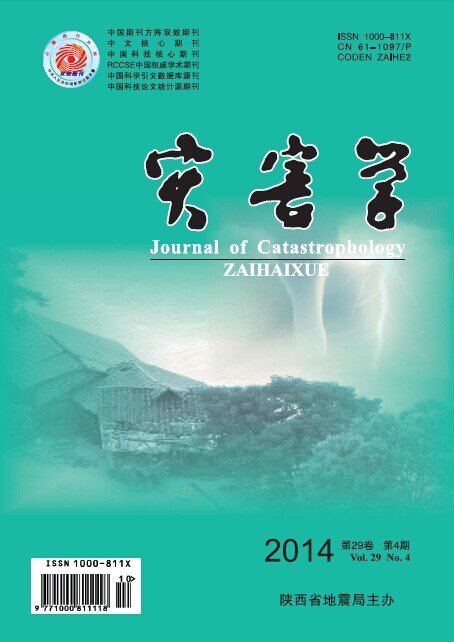《灾害学》编辑部.《灾害学》. 1986 –
Zaihaixue Zazhishe, eds. Zaihaixue (Journal of Catastrophology). 1986 –
The Journal of Catastrophology (http://www.zaihaixue.com/) was founded in 1986. As the first Chinese scholarly journal that specialized on the subject of disasters, the publication was an effort by researchers in China to build disaster studies as a discipline separate from other natural and physical sciences—such as geology and engineering—that focused on harnessing science to discover more effective disaster prevention and mitigation measures.
In the past, the journal mainly presented studies on extreme events related to earthquakes and floods. This focus was not surprising because these two types of extreme event are the main natural triggers which have traditionally led to high human cost and property loss in China.
Being a journal of natural and physical sciences, the methods used are typically quantitative and highly technical. That said, from time to time, the journal publishes studies that examine extreme events that involve other methods, such as the use of archival materials. For example, the study that I annotated earlier (link) compares the context and outcomes of two droughts that took place in High and Late Qing respectively. In fact, several papers from the journal argue that because patterns can be discerned from the occurrences of natural extreme events (e.g., earthquakes), historical archives are a critical resource for understanding their underlying causes and hence be better prepared for them.[1]
The journal has experienced a curious episode of identity change in its early days. The journal’s English title was changed from Journal of Disaster Science to Journal of Catastrophology barely a year after its debut. This title change seems to have been precipitated by a concern for legitimacy: the original English title was considered not sufficiently academic and elegant. This concern was articulated at the inaugural conference on disaster studies in May 1987 by the late Qian Xue Sen (钱学森, 1911-2009), an academician and aerodynamics specialist who was then Chairman of the party-led China Association of Science and Technology (中国科学技术协会) and an advocate for the journal.[2] Qian coined a new word “catastrophology” to meet this need for sophistication. Interestingly, the Chinese title Zai Hai Xue (a literal translation of which might be Hazards Studies) remains unchanged till today.
Aside from its place in the field of disaster prevention and mitigation, the articles and the journal itself provide a window to understand the development of “modern” emergency management in China.[3] For this reason, those investigating the history of emergency management, particularly related government policies and scientific fields, should find this journal of interest.
Wee-Kiat Lim, Research Fellow, Lee Kuan Yew Centre for Innovative Cities, Singapore University of Technology and Design
[1] See for example, Houde Xu’s A discussion on studying disaster history of China (论我国灾害历史的研究 Lun woguo zaihai lishi de yanjiu) in Volume 10 No. 1, and Yonglin Huang and Junsuo Gao’s The current situation and development of collating and using historical earthquake data (历史地震资料整理与利用的现状与发展Lishi dizhen ziliao zhengli yu liyong de xianzhuang he fazhan) in Volume 24 No. 3.
[2] The suggestion was captured in the third issue, p. 4. The original text in Chinese is as follows: “最后,我还有一个小的建议,最近收到了一个刊物,是西安出版的《灾害学》。中文叫灾害学也可以,底下注的英文名字不太学术化,叫 ‘Journal of Disaster Science’,Disaster Science不那么文气。我诌了一个文气点儿的‘Journal of Catastrophology’,灾害一词应是 catastrophe。这是一个小建议。我们在座的跟它有关系。我们中国人要出版刊物,用字用得高深一点。”
[3] Wee-Kiat Lim. 2014. “Field Work: Constructing A New Emergency Management Organizational Field in China in the Post-SARS Era.” University of Colorado Boulder, Boulder, CO. Unpublished Doctoral Dissertation. My dissertation traces the genesis and growth of the emergency management organizational field in China over the ten-year period since the 2003 Severe Acute Respiratory Syndrome (SARS) outbreak. I conducted my fieldwork in Beijing in 2012, using a multi-method approach that involved interviews, participant observation, and analysis of archival materials. Of which, Journal of Catastrophology was a critical resource.
![[Teach311 + COVID-19] Collective](https://blogs.ntu.edu.sg/teach311/files/2020/04/Banner.jpg)
